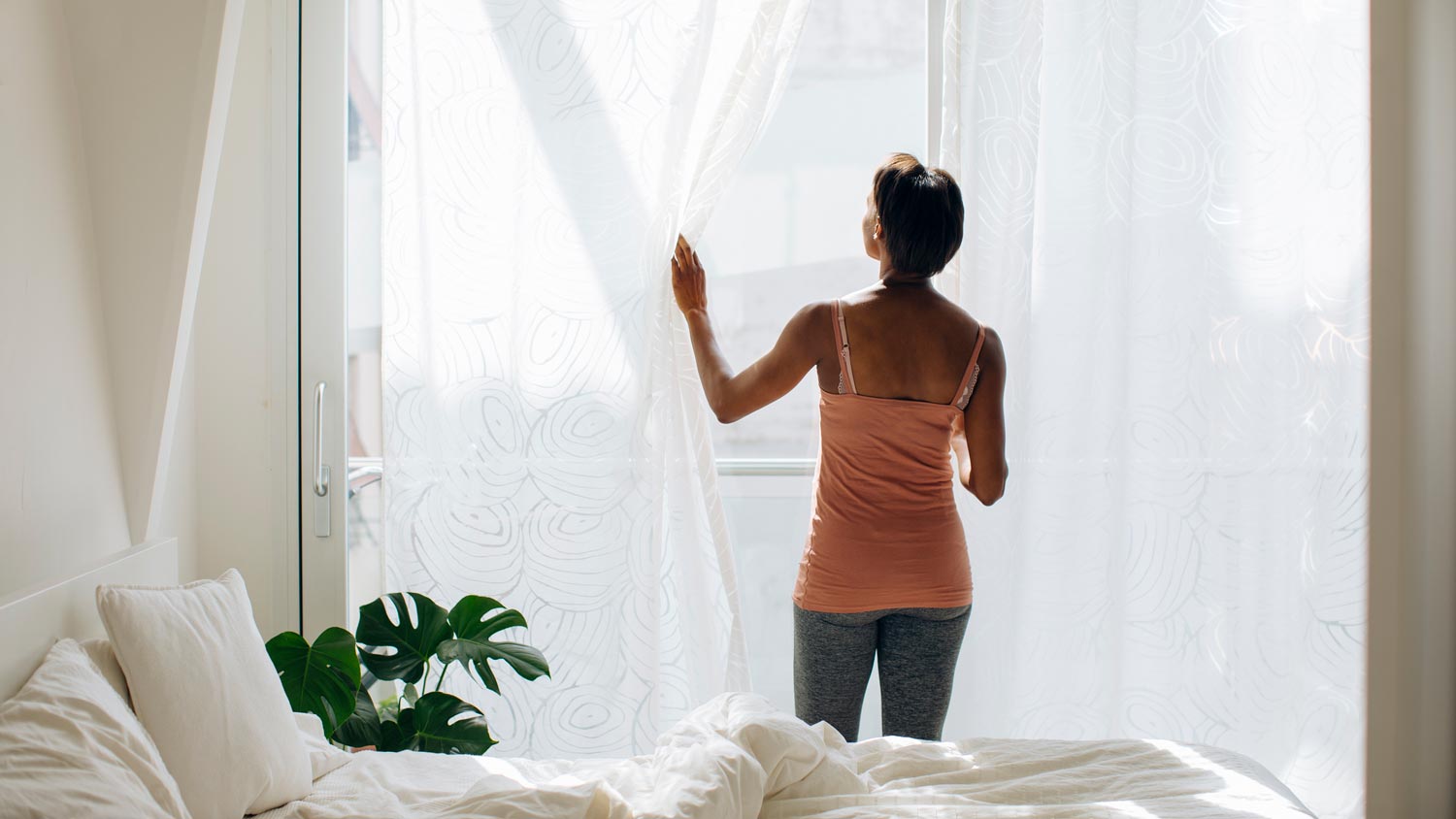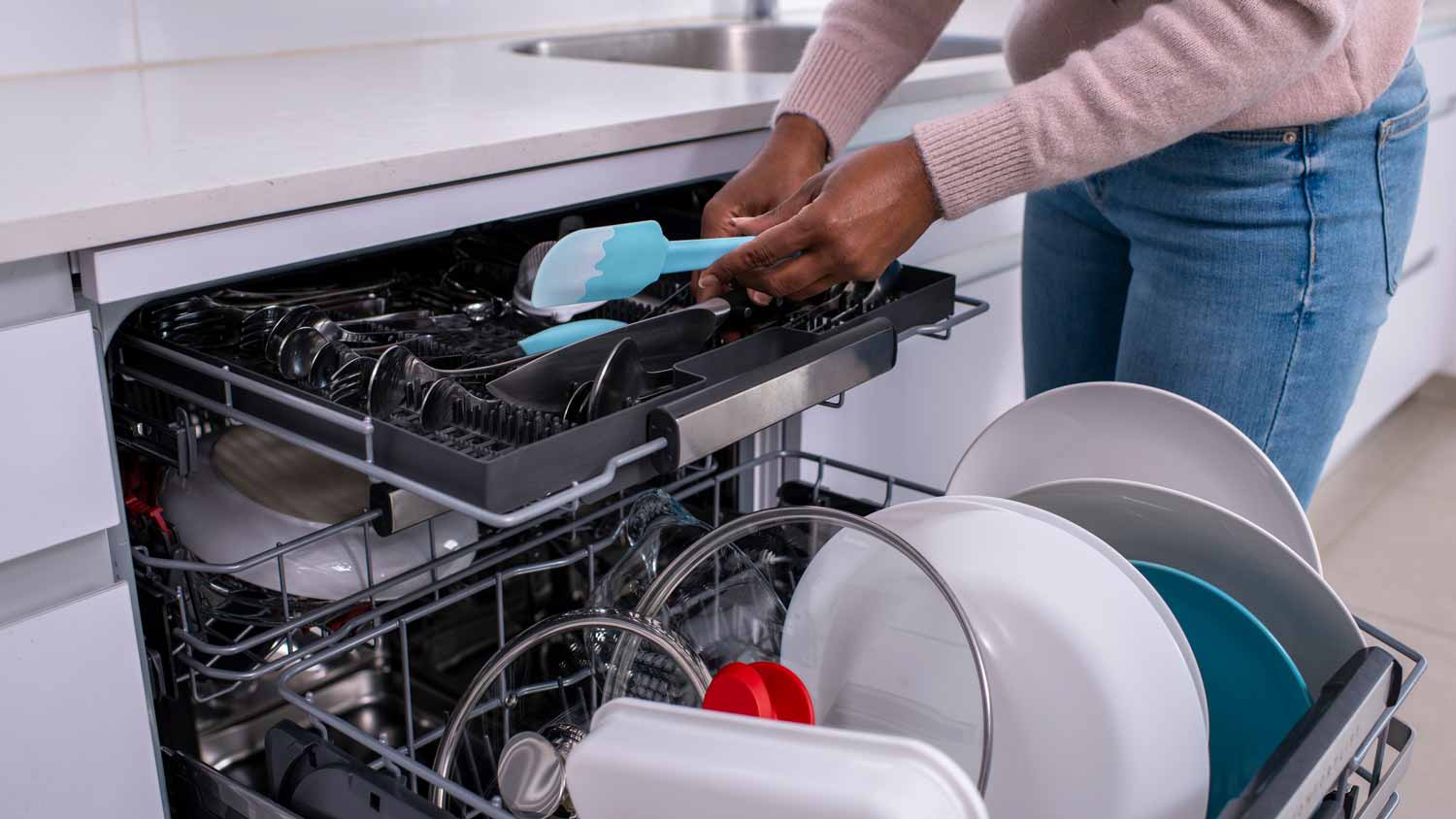11 Ways to Cool a Room Down Fast
When summer gets hot, these tips will help you keep your cool


The warmer the weather, the hotter our homes. The blissful summer sun we all crave during the winter tends to come with the kind of heat that makes a room sweltering hot—especially if you don’t have an AC. Though a central air conditioner packs the biggest punch, these 11 tips will show you how to cool a room down fast. Say goodbye to sweating yourself to sleep.
1. Service Your AC
If you have central AC, you’re already in a good spot. Unfortunately, sometimes your unit may struggle to reach the temperature set on the thermostat—especially if you’re dealing with a major heat wave. To prevent issues, service your AC at least once a year, preferably in the fall. This will help maximize efficiency and resolve any issues ahead of the warmer seasons. Call an air conditioning repair service near you to schedule an annual visit.
2. Keep Your AC Running All Day

It may not seem the most efficient, but it’s better to keep your AC running all day than to frequently turn it on and off. This won’t just save you energy and money; it helps control the humidity level in your home and prevents your unit from having to over-exert itself to bring a room back up to temperature. The result? A cooler home and an AC that needs fewer repairs.
3. Run Your Ceiling Fan Counterclockwise
The direction of your ceiling fan actually matters. During the winter, you’ll want your ceiling fan to spin clockwise, which creates an updraft that helps circulate warm air. In the summer, you’ll want your ceiling fan to spin counterclockwise and create a downdraft, so you can use a ceiling fan to keep your room cool.
Most ceiling fans have a switch or chain that lets you reverse the direction, but if you’re unsure, referring to the manufacturer’s instructions is your best bet.
4. Cover Your Windows

It’s no secret that sunlight feels hotter when it’s shining through a window. You can quickly cool off a sweltering room by blocking out the light. If you have curtains, draw them. Consider installing solar shades, low-emissivity (low-E) glass, or a sun-blocking window film. These work to block or reflect UV rays, which in turn, keeps your room cool.
Tip: If you’re on a budget, consider limiting window treatments to south-facing windows that get the most light.
5. Close Your Windows During the Day
You might think it’s a good idea to open your windows and let in a breeze, but as long as the sun is shining, this only helps hot air find its way into your home. During the heat of the day, keep things cool by keeping your windows closed. You can open them as temperatures start to dip in the evening.
As a general rule—as long as temperatures are hotter outside than inside—you’ll want to keep your windows closed. If temperatures are hotter inside your home, you’ll want to open them up.
6. Create a Cross Breeze

A cross breeze is one of the best lines of defense against a hot, stuffy room. You can create a cross breeze by opening two windows that are across or diagonal from each other—even if they’re in different rooms. Save this trick for the evening, though. Outside air can get very warm during the sunniest parts of the day.
For some extra oomph, put a window-sized fan in each window, but pay attention to the direction they spin in. One fan should pull air into your home, while the other should pull air out of your home.
7. Turn Off the Lights
If you have incandescent lights, turn them off. This type of lighting is known for producing significant amounts of heat, making a hot room even hotter. Though they’ve fallen out of favor in the United States and CFL or LED lights are now more common, you still might find incandescent lights in recessed lighting, closets, and ceiling fixtures—especially if you haven’t recently updated your home.
8. Use Exhaust Fans
Warm air rises. Exhaust fans—like the ones you find in your bathroom or kitchen—can help pull this warm air out of your home. When temperatures get hot, turn on every exhaust fan you can find.
You can also use large portable fans to create a whole-house exhaust fan. This works particularly well in multi-story homes. Place large fans in the windows of the upper stories, and keep your doors open. This will draw cool air up and warm air out.
9. Close Your Doors
If you’re not using certain rooms, close the doors. This rings especially true for rooms on upper levels or south-facing rooms, which collect the most heat. Since heat rises, remember to be strategic.
For example, if you have a loft, you can open it to let in warm air and keep it out of your lower levels. Similarly, if your bedroom is on the second story, close the doors of lower-level rooms to prevent their hot air from migrating.
10. Avoid Heat-Producing Appliances

When dealing with a sweltering room, avoid using heat-producing appliances like your stove, dishwasher, clothes dryer, and TV. Consider swapping out older appliances for Energy Star appliances that meet the Environmental Protection Agency’s energy efficiency standards. These typically produce less heat and will save you money on your electric bill.
11. Install a Window AC Unit
If you want a budget-friendly option that will cool a room quickly, install a window AC unit. This unit can cool off a single room, and it’s significantly less expensive than splurging on central air. Make sure you choose a unit that is compatible with the size of your room. You can pick one up from a hardware or electronics store and install a window AC yourself in a couple of hours (though you may want to enlist a friend to help).





- Furnace Repair
- Air Conditioning Repair
- HVAC Repairs
- Furnace Installation
- Wood & Pellet Stove Repair
- Dehumidifier & Humidifier Repair
- Heat Pump Companies
- Swamp Cooler Repair
- Wood Stove Services
- HVAC Companies
- Commercial A/C Repair
- Geothermal Installation
- Air Conditioning Installation
- Boiler Repair
- 24 Hour Furnace Repair
- Geothermal Repair
- Heat Pump Repair
- Humidifier Installation
- Thermostat Repair
- Thermostat Installation
- Nest Installation
- Heating & Cooling
- Heating Repair
- Furnace Cleaning
- Furnace Tune-Up
- HVAC Technicians
- Subcontractors
- Furnace Maintenance
- Plumbing & Heating Companies
- Wood Stove Inspection
- Mini Split Installation
- Wall Heater Repair
- Duct Installers
- 10 Genius Fan Hacks to Keep Cool Even Without AC
- 9 Energy-Efficient Ways to Cool a Home
- What Is the Best Temperature to Set Your Air Conditioner to in the Summer?
- 7 ‘Cool’ Tips for Keeping Rooms Cool With Fans
- How Do I Keep My Home's Second Floor Cool?
- 13 Cool Tips to Reduce Air Conditioning Costs This Summer
- 11 Home Heating Mistakes You Didn't Know Were Costing You
- 11 Reasons Your AC Is Blowing Hot Air
- 12 Ways to Keep Your Home (and Yourself) Cool During Extreme Heat
- Does Closing Doors Help Air Conditioning?















